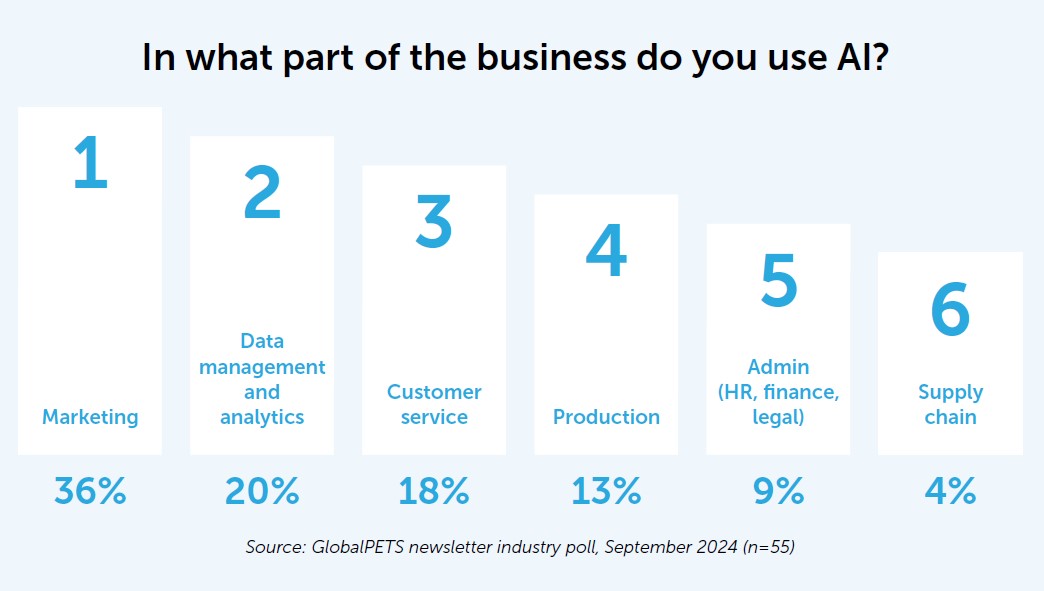How predictive and generative AI can drive retail sales

As customers continue to buy online, offering them fast, convenient and personalized experiences is more important than ever. So retailers are embracing artificial intelligence.
Innovative technology is a key driver of retail growth and profitability. Retailers are using artificial intelligence (AI) to personalize shopping in physical and online stores.
They understand the benefits and are applying the technology to streamline processes, increase productivity and personalize the experiences of both customers and employees.
Getting the right data
Some retailers struggle with the data that feeds AI. It’s all too easy to focus too much on operations, internal spreadsheets, and promo-driven loyalty and marketing programs, while forgetting to focus on the customer themselves.
That’s where data-driven personalization comes in, and AI can help. Using it to enhance a customer journey across all channels, and in the context of a customer loyalty program, means retailers can unlock new opportunities for growth.
Anyone who wants to be successful as a retailer in this new AI world needs to leverage customer data in a secure and reliable way.
Pet Supermarket, a Florida-based specialty retailer, uses Salesforce omnichannel technology to enhance the online shopping experience, improving how it serves and interacts with its customers.
For instance, it can incorporate inventory from its extensive network of over 200 storefronts into a key competitive advantage against the rising Chinese super-apps like Temu and Shein.
Predicting stock levels
For market leaders, keeping products on the shelves is a constant challenge. With predictive AI to support their inventory management, they can even go a step further.
They can combine current stock with historical data, plus the latest market trends and store locations. Based on this, retailers gain a better understanding of product demand and can adjust their stocks in preparation.
Time management
Automation can save time for both retailers and consumers – that’s obvious. By analyzing consumer behavior, product performance and sales patterns, AI paints a picture of what attracts consumers.
So investing in effective merchandising solutions is not only good for efficiency, it also keeps customers happy.
The data provided by the technology also helps companies to design in-store displays and promotional materials.
So it saves the time that teams involved in merchandising, marketing and design would otherwise spend on researching and formatting layouts – time they can now spend on making strategic and creative decisions.
Smartphone as remote control
A key technological trend is use of the cellphone as a remote control for shopping. Smartphones instantly connect consumers with brands when they visit online and offline channels.
Imagine you’re in a store and the mobile app goes into in-store mode, for you to see what’s in stock, browse store promos and hear about bring-your-pet-to-the-store days, to name just a few benefits.
Mobile apps are also becoming increasingly important for connecting sales channels, with features such as digital loyalty cards. And marketers are embracing alternative communication channels to engage people wherever they are.
For example, sending messages via push notifications, streaming services and text messaging using WhatsApp or Kakao Talk.
The volume of these messages is rising faster than growth rates of traditional emails have been. And with AI, the messages are automatically generated.
Not only are the places and the ways customers shop changing, but also the ways they pay. The best example of this is the growing popularity of digital wallets – with applications such as Apple Pay, Google Pay and Amazon Pay.
Alternative payment methods at online checkouts are proving useful in dealing with the pressures of inflation and shrinking budgets.
Personalized and seamless experiences
Generative AI and predictive AI enable retailers to personalize every moment in the customer journey with a data-driven approach.
Personalization gives brands the power to turn every shopping interaction into a meaningful and rewarding experience, from recommending the perfect gift for a friend to finding the best deal on a new gadget.
Those shopping experiences are essential to customer engagement, retention and loyalty in today’s retail landscape.
One retailer in the pet world that really knows its audience is the Reddy store in New York. As you walk in, not the customers but the dogs are warmly greeted by name. And it knows exactly what those dogs like and need.
Customers might just run into a celebrity who has come in for a gourmet meal – at a matching price – for their dog.
It is the community aspect of consumer loyalty that has a considerable part to play at the store. People don’t only go to Reddy for products for their dogs. It’s also very much about the friends they (and their dogs) are making there.
Trust is crucial
Increasing productivity and profits with AI should not come at the expense of consumer trust.
Customers are concerned about its impact on society, fearing bias and unintended consequences. To counter this skepticism, transparency and proactive communication are key.
Customers need to know that company employees – rather than the technology – are still at the wheel.
Upskilling is therefore important too. Only then will teams learn how to use data while keeping the data sources and first-party data secure.
Long-term thinking
As a retailer, whether you want to increase your revenue or just work more efficiently, always put improved customer experience at the heart of whatever you do. And dare to look into the future.
Develop a long-term strategy for your top 3 segments. Attach a 2-year program to this – be clear which segments you want to address with which message in which channel, and how you want to develop them. Next to this, real-time personalization is crucial too.
Don’t show your returning VIP shoppers the same generic website – personalize banners, products and content.
Rewarding loyal customers will help you retain them, rather than losing them to competitors.
In fact, you just can’t spell retail today without AI. In marketing, including merchandising and customer service, technology is set to make an ever-greater mark on profits, productivity and loyalty. AI is going to change retail and commerce forever.

